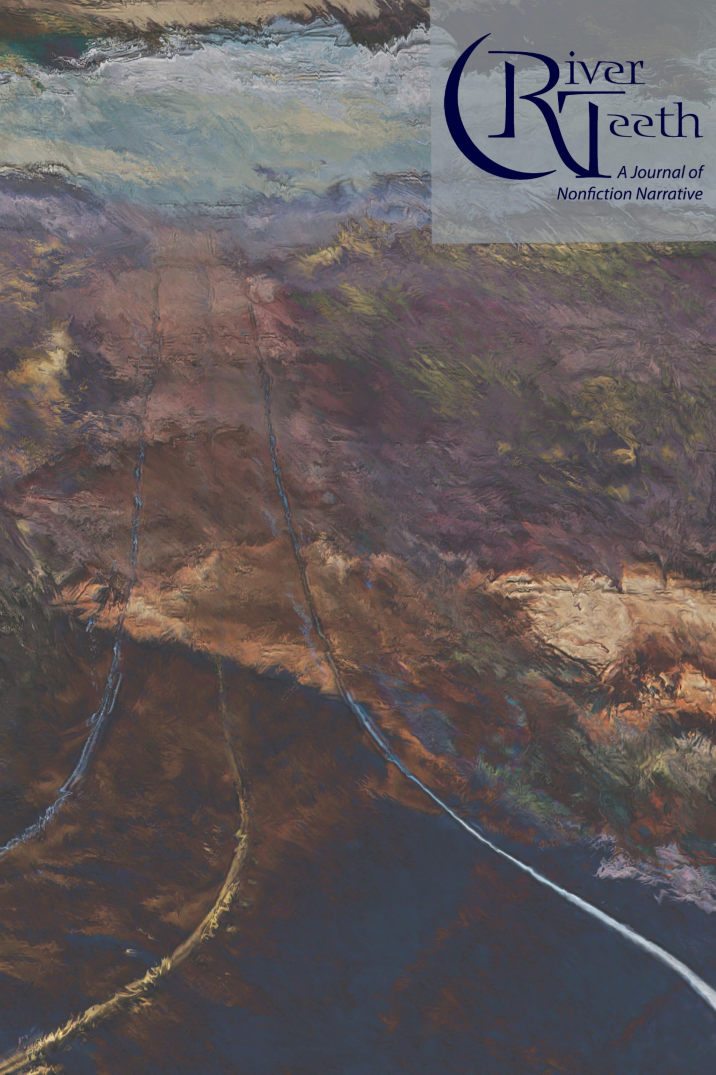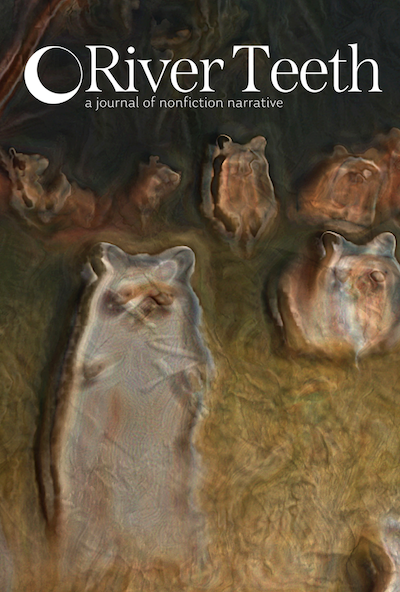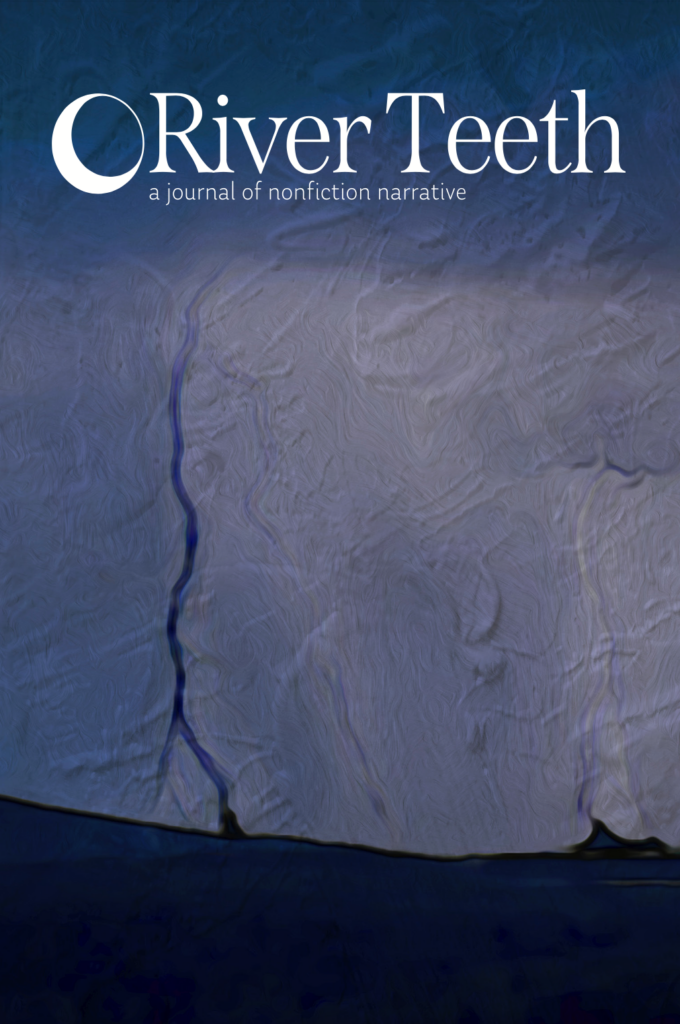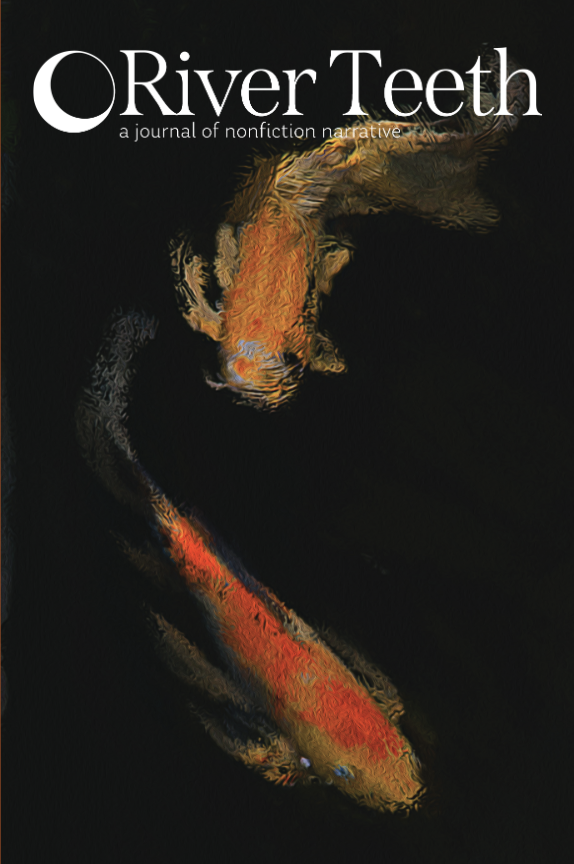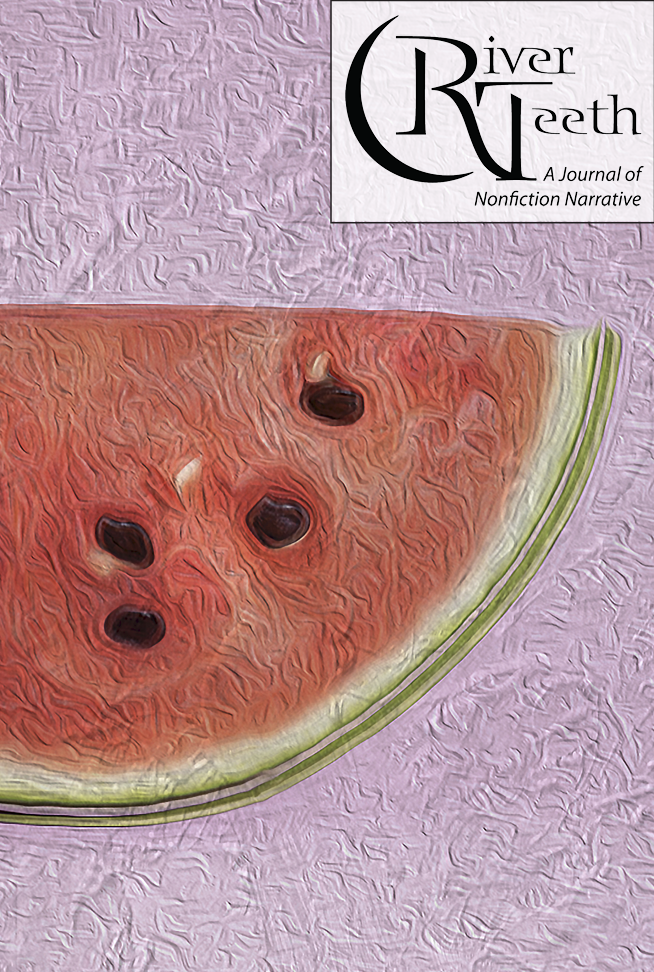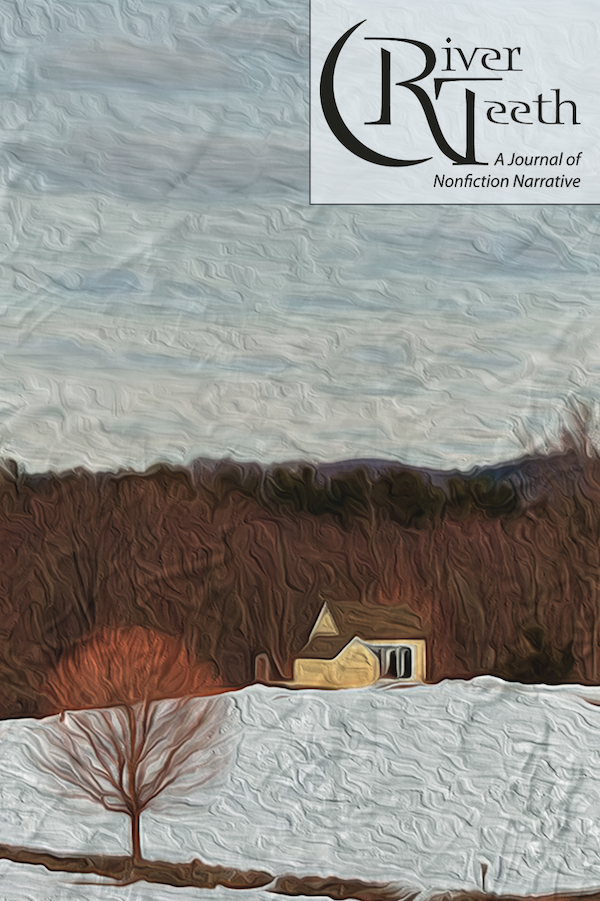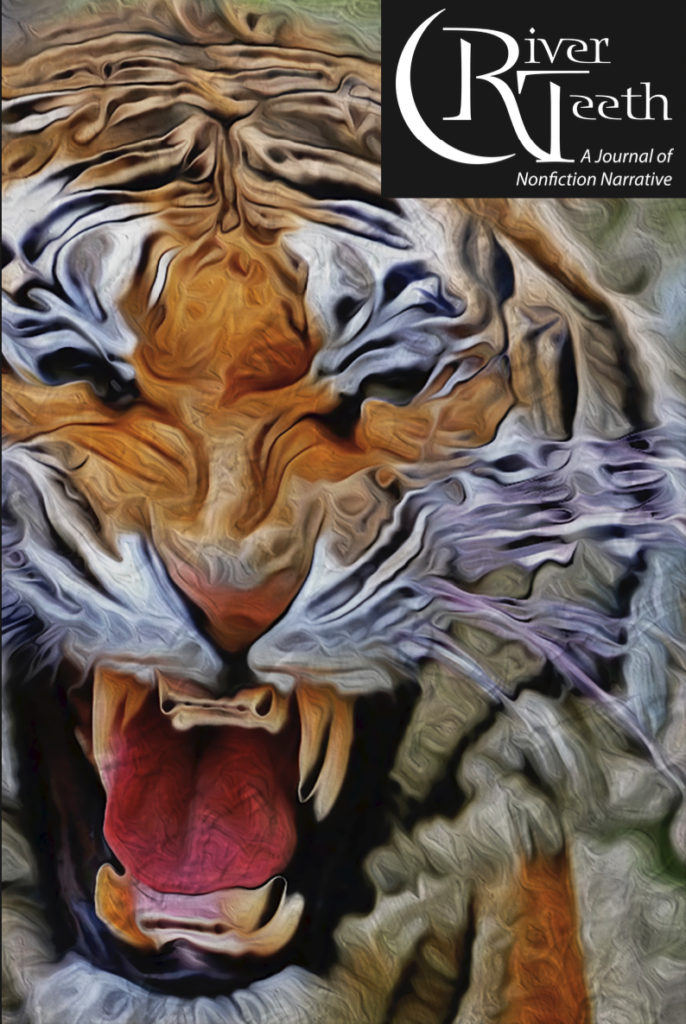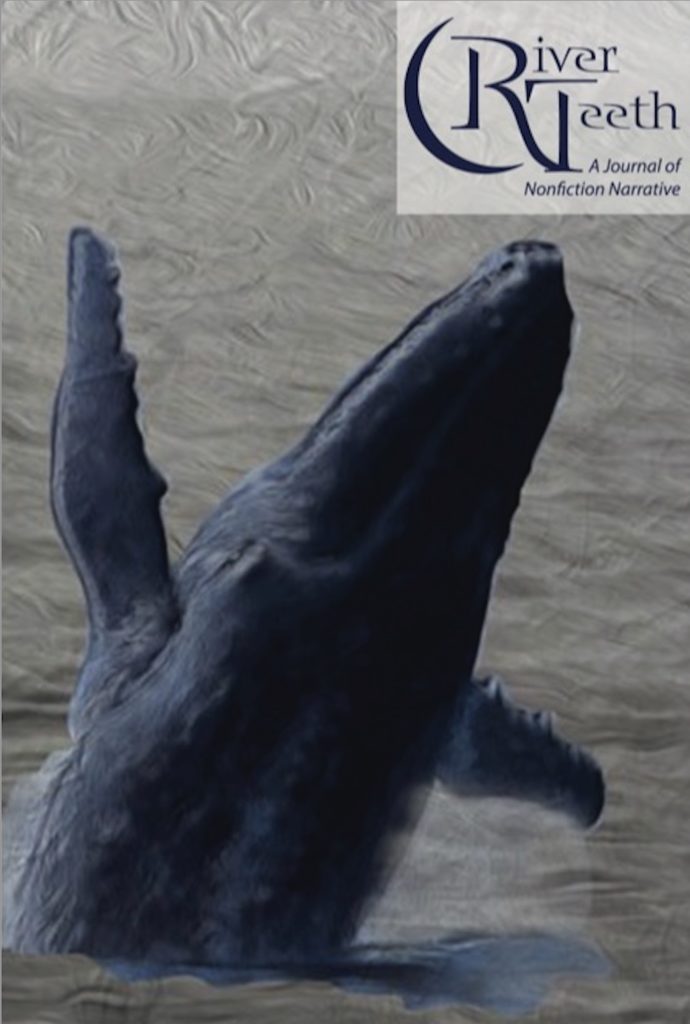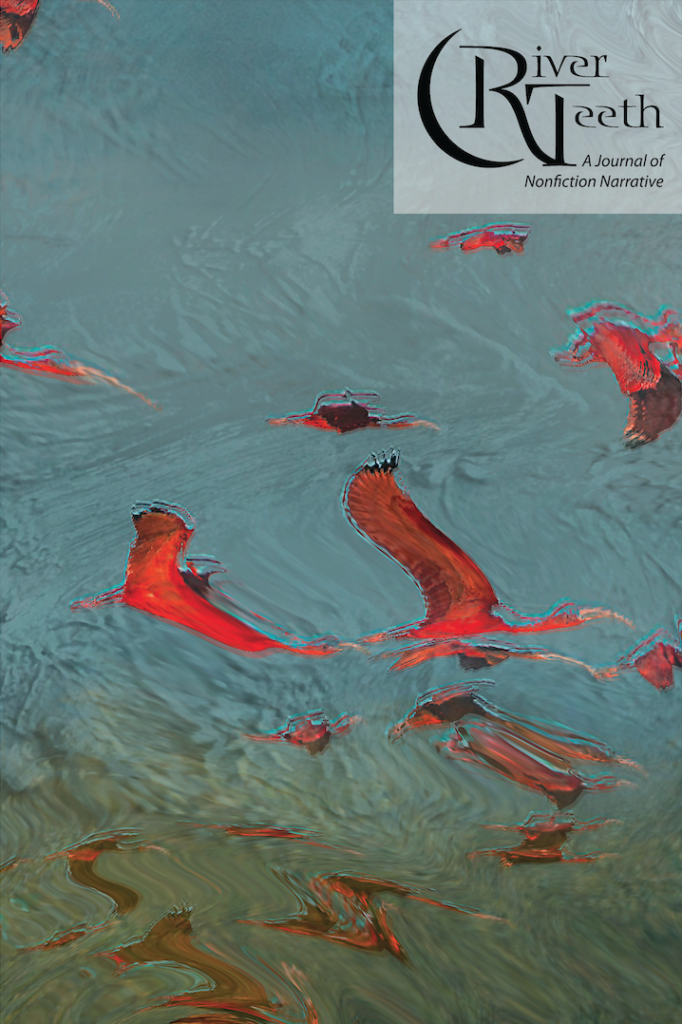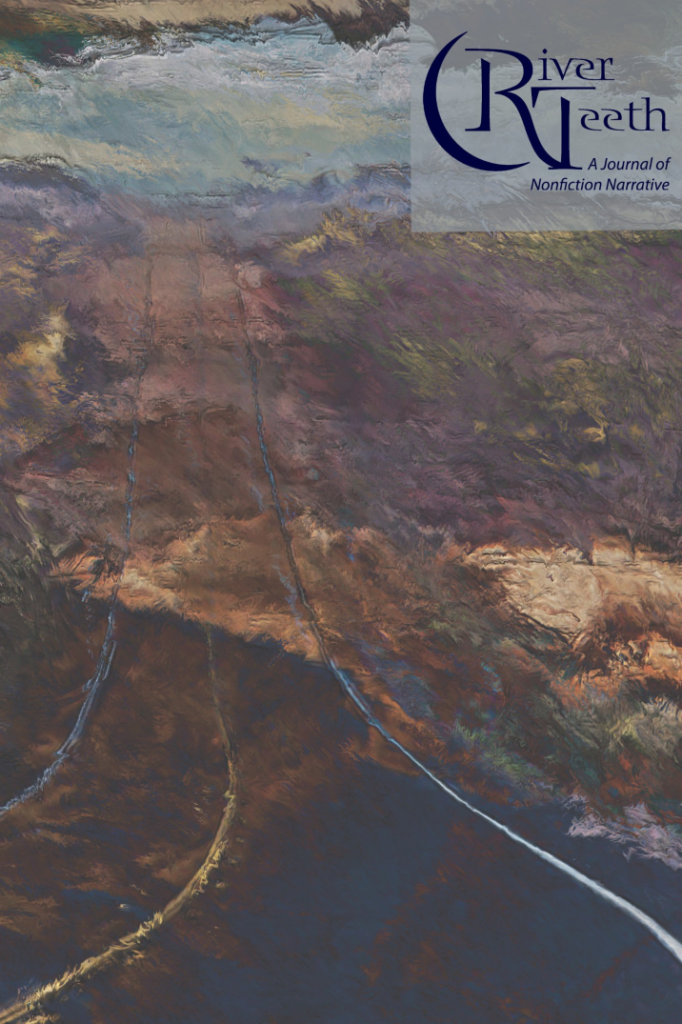By Jill Christman & Mark Neely
June 8, 2020
In the fall of 2018, Joe Mackall and Dan Lehman wrote to us to say that River Teeth needed a new home. They wanted to know whether we would consider joining them on the masthead and making Ball State University the magazine’s institutional headquarters.
We’d all been colleagues in Ashland University’s low-residency MFA program, both of us were long-time readers of River Teeth, and Jill had published several essays in the magazine, experiencing Joe and Dan’s editorial brilliance and kindness firsthand. So our first thought was: “What? River Teeth? Here? That would be amazing!” We felt an overwhelming sense of gratitude that the two of them would trust us to take on a project they had nurtured for twenty years and built into one of the most important and respected literary magazines on the planet. As far as credentials go, Jill had her long career as a writer and teacher of creative nonfiction, and Mark had years of experience working on literary magazines that went back to his grad school days. There would be a lot to learn, of course, but this was too good an opportunity to pass up, right?
Our second thought was: “Hell to the no. Nope, nohow, not gonna happen.”
The doubts began to pile up. What about our kids, our demanding jobs, our own writing projects that so often were pushed to the side by other responsibilities? And weren’t print magazines dying anyway? Weren’t universities slashing budgets for the arts? We’d read the headlines: “Legendary Literary Magazine to End Print Run” and “Literary Magazines Are Born to Die” and “On the Decline of Print Magazines.” Plus, there was the hubbub about the decline of serious reading; these days, we’re told, people are reading and writing more than ever before, but attention spans have been reduced to a mere handful of characters at a pop. Was 2019 really the best time to adopt a literary journal with a perfect binding and no word limit?
Mostly we worried about the magnitude of the responsibility. In addition to being a magazine we loved built by humans we loved, River Teeth was an institution. A place that had helped define the landscape of creative nonfiction for the entirety of the century in which we found ourselves. What
if we screwed it up?
If you’re reading this, you’re likely holding a physical copy of the issue in your hands, which means you are an unusually devoted member of the nonfiction-reading public. You love essays enough to seek them out, sit with them a while, and take the time to listen to what their authors have to say. You share our desire for the kind of true stories that help us find meaning in a world that seems, most days, to have lost its collective mind. And you realize that, although every medium has its uses, some stories come across much better on the printed page.
We get it. We share your commitment to language and stories, and we’ve been around long enough ourselves to know that if we want the things we love to thrive, we have to work for them. This rule applies to nearly everything—African violets and prickly teenagers, stray dogs and old houses,
friendships and democracies. Without hard work and care, these things will wither, turn sour, disappear.
So, with the support of our generous colleagues, administrators, and friends, we navigated a few roadblocks and found our way to a yes. Yes, we would love to work with you, Joe and Dan. Yes, we are excited to share this experience with our enthusiastic and talented students. Yes, we know it’s going to be hard some days.
Now we’ve taken on not just a magazine, but a full-fledged literary platform—print journal, annual book contest, the weekly online Beautiful Things, book reviews, social media, et cetera—and already our students have brought a fresh perspective and mad technical skills to a decades-old magazine. They have helped us with everything from logo art and website design to social media (we’re now on Instagram!), issue previews, subscription drives, prep for the Association of Writers & Writing Programs bookfair, and submission management. Just one year into this grand experiment, we’ve worked side-by-side with Joe and Dan; our managing editor here at Ball State, Todd McKinney; and a fantastic team of students in classes and internships, learning together how collaboration across state lines and generations makes it possible to run a big journal on a small budget.
Of course, Joe and Dan remain at the top of the masthead, and as co-editors, we pay close attention and draw inspiration from their editorial acumen and passion for great nonfiction writing. We hope to conduct ourselves with some of the energy they’ve brought to the magazine in its first twenty-one years, and we’re determined to help River Teeth beat the odds and reach middleage without losing the fire and vision of its youth. We’re having a really good time.
Before we reach the end of this story about new beginnings, we want to tell you about another beginning. A long time ago, in Jill’s first year at Ball State, she received a friendly email from a writer and teacher who had heard her read from her freshly minted memoir at the AWP conference in Baltimore.That kind teacher was Michael Steinberg.
Mike founded Fourth Genre in 1999, the same year that River Teeth began publishing, and with a generosity of spirit and love for nonfiction that awed us all, he spent the next twenty years helping the essay and its writers along wherever and whenever he could. Mike cared about essays and the people who wrote them, actively seeking out and supporting young writers. Jill was one of the lucky recipients of Mike’s guidance. Come to Winter Wheat at Bowling Green this year, Mike wrote, the theme is creative nonfiction. We understand that now, fourteen years later, a nonfiction-themed conference isn’t that big of a deal, but back then, with nonfiction tracks just starting up in creative writing programs across the country, this was an innovation. We packed up our three-year-old daughter—she’s driving now—and headed east to Bowling Green. Mike came to Jill’s talk and he brought his friend Joe Mackall with him. The rest is a history you hold in your hands.
Next week, the River Teeth gang will head down to San Antonio for the AWP conference. We’ll wander the bookfair, expecting to see Mike with an armload of new books—Hey! What are you reading?—but he won’t be there. Michael Steinberg, friend to so many of us, a keystone in the nonfiction world, died in December 2019, a week after he was diagnosed with pancreatic cancer. Our world won’t be the same without him. Thank you, Mike. For everything.
And thanks to all of you for reading.
Postscript
When we sent this note off to our copyeditor in February, we had no idea how different the world would be by the time the issue went to press. Writing again, the day after Easter, we are more aware than ever that the future is always a mystery, and that so much will change between now and the time you hold this River Teeth in your hands. Part of the pleasure of print is that every piece of writing is a kind of time capsule. Literature moves slowly—some of the essays in these pages were likely written years ago—but that slowness feels like a necessary antidote in our fast-paced, pixelated world. We don’t know what will happen between now and the time you read this note, but we at River Teeth wish you safety and good health. In a strange and frightening time, we hope you find solace in these pages.
Read Contributors’ Notes for Issue 21.2 >

